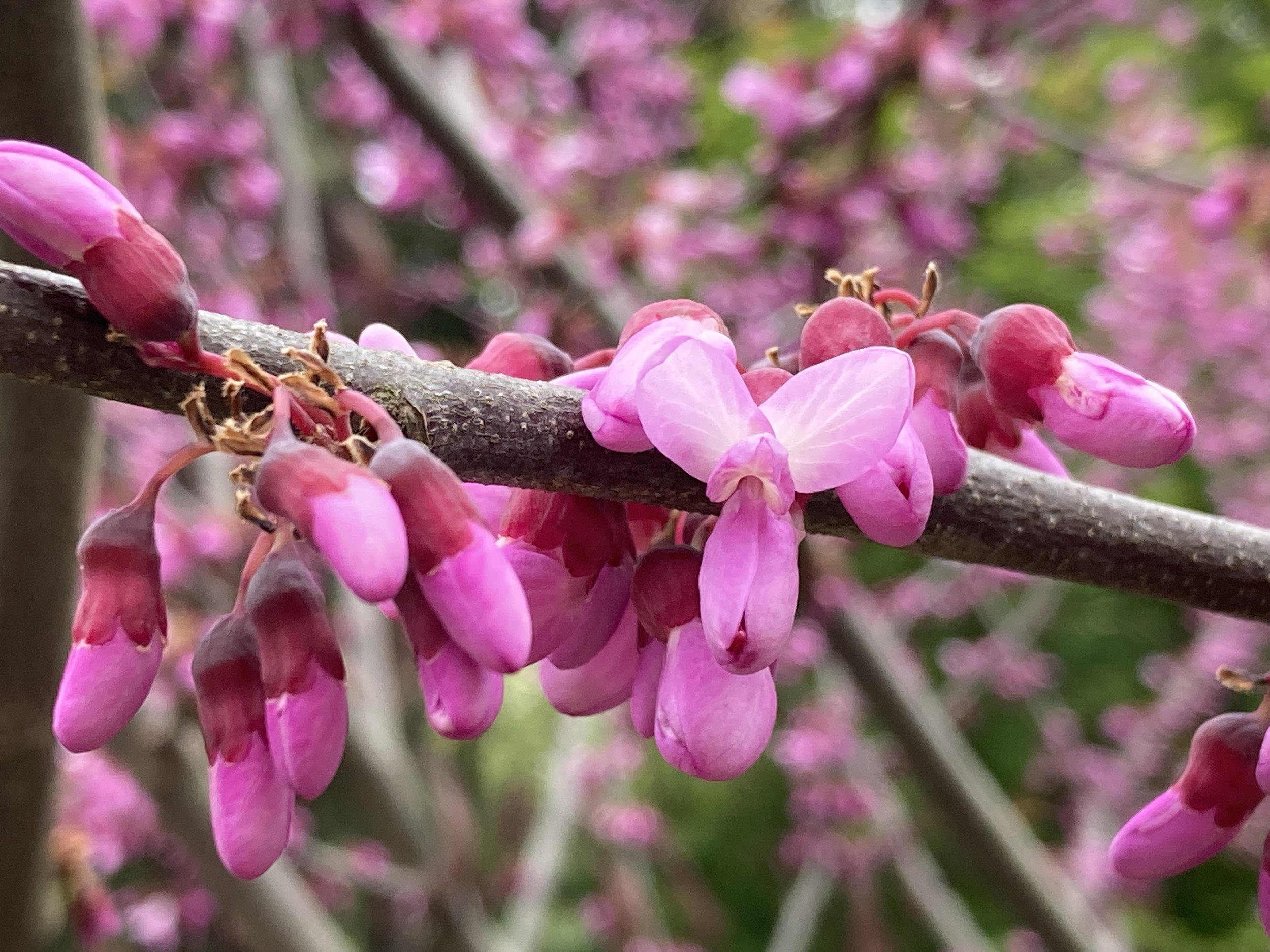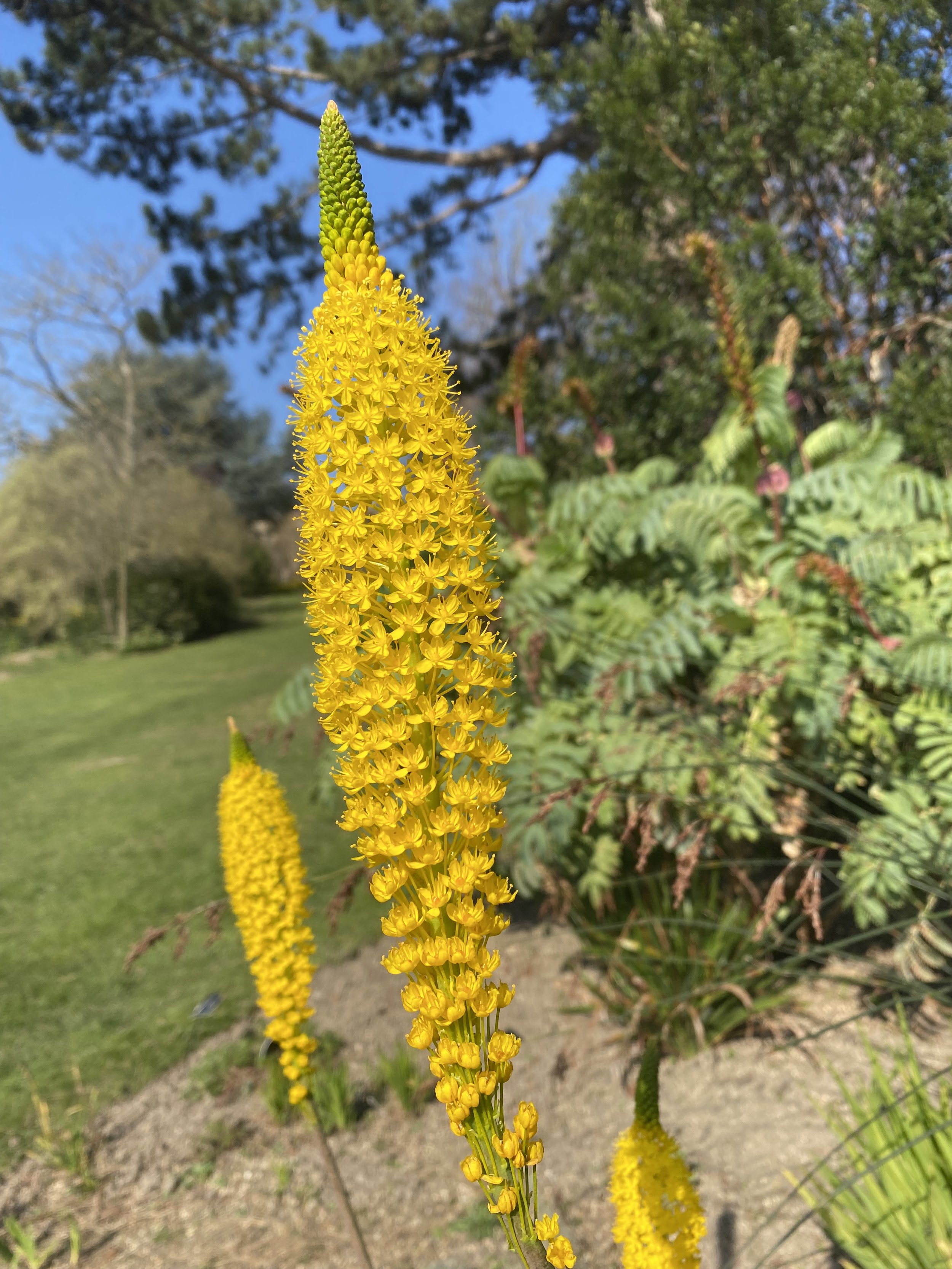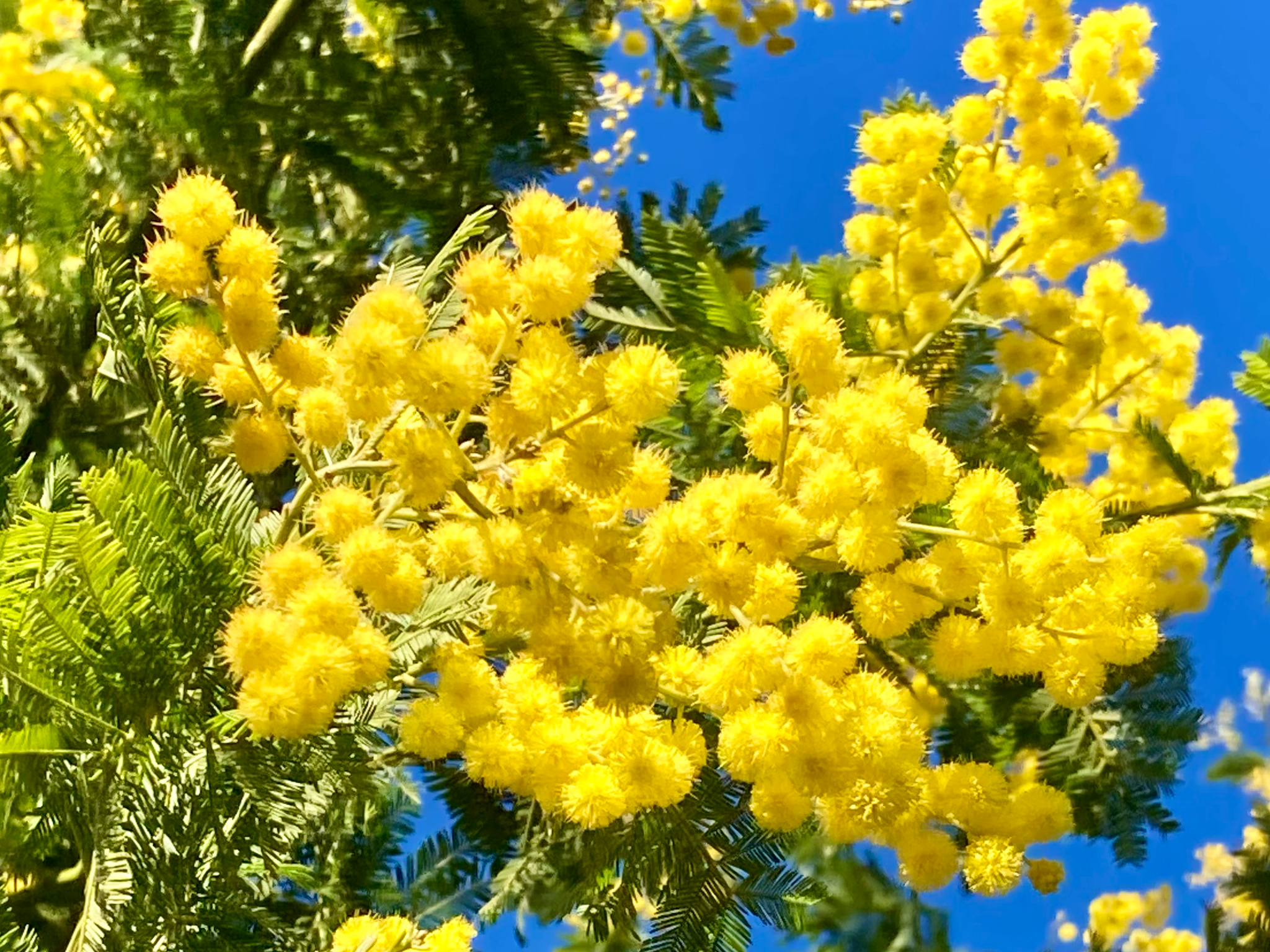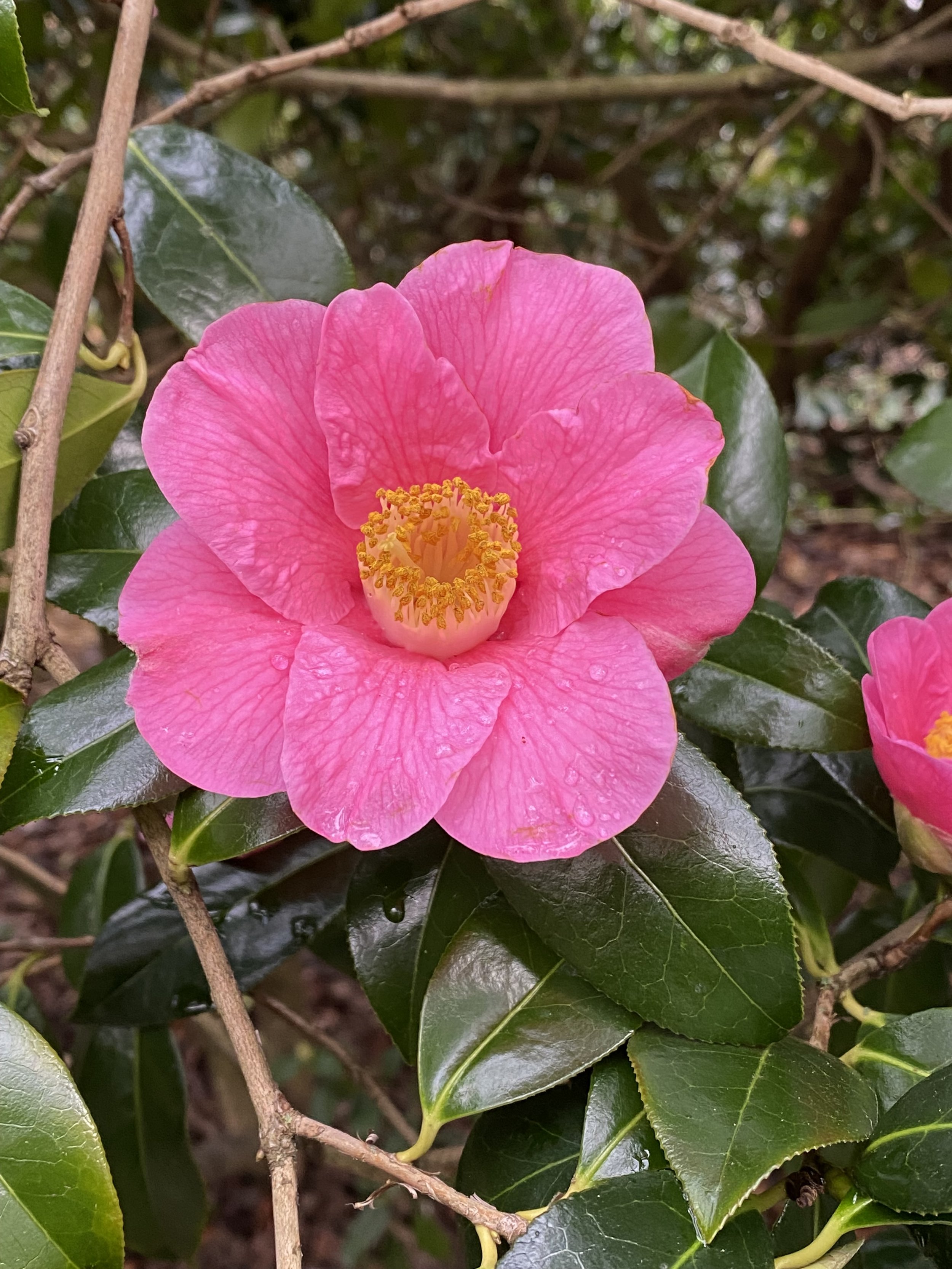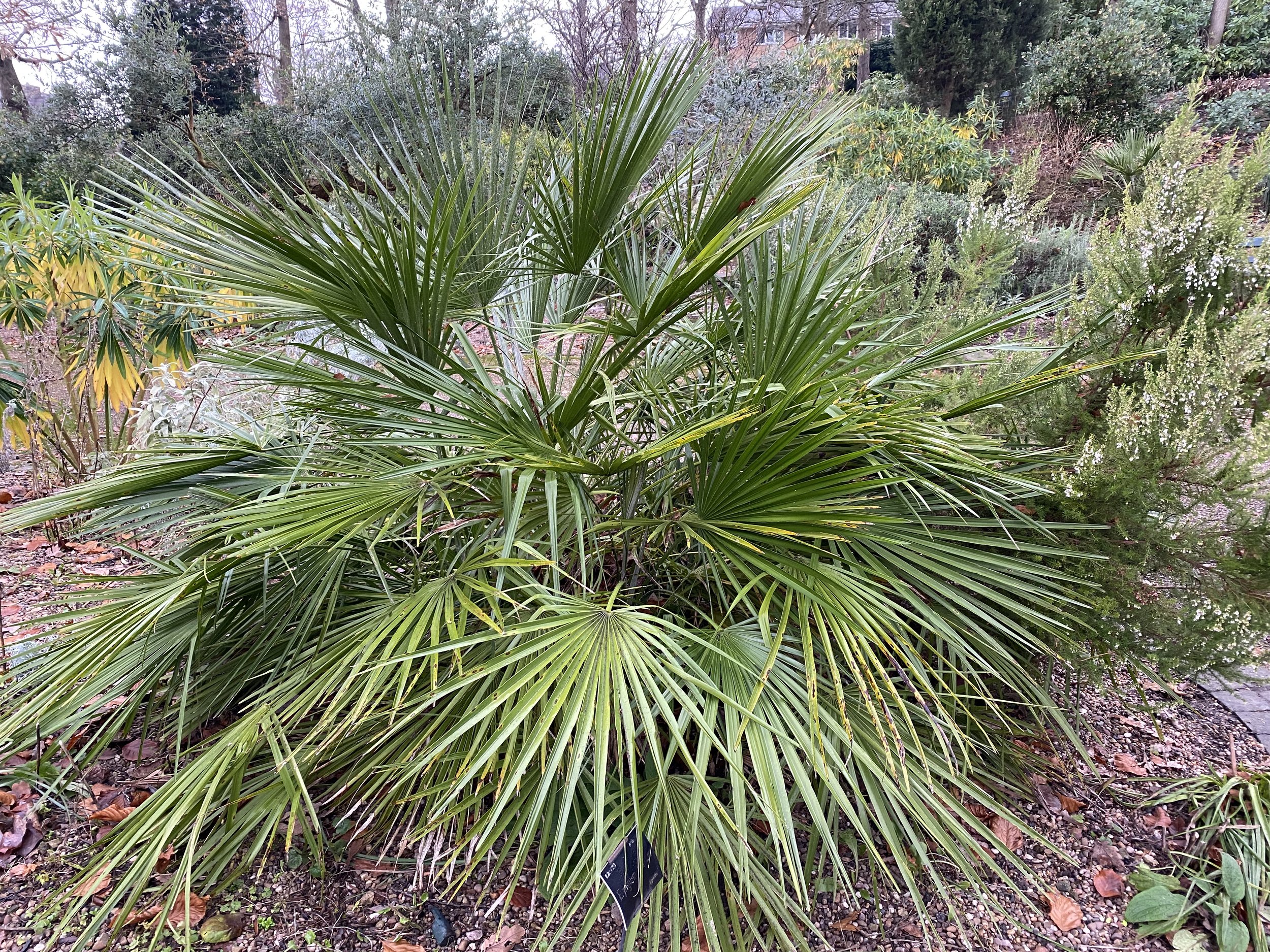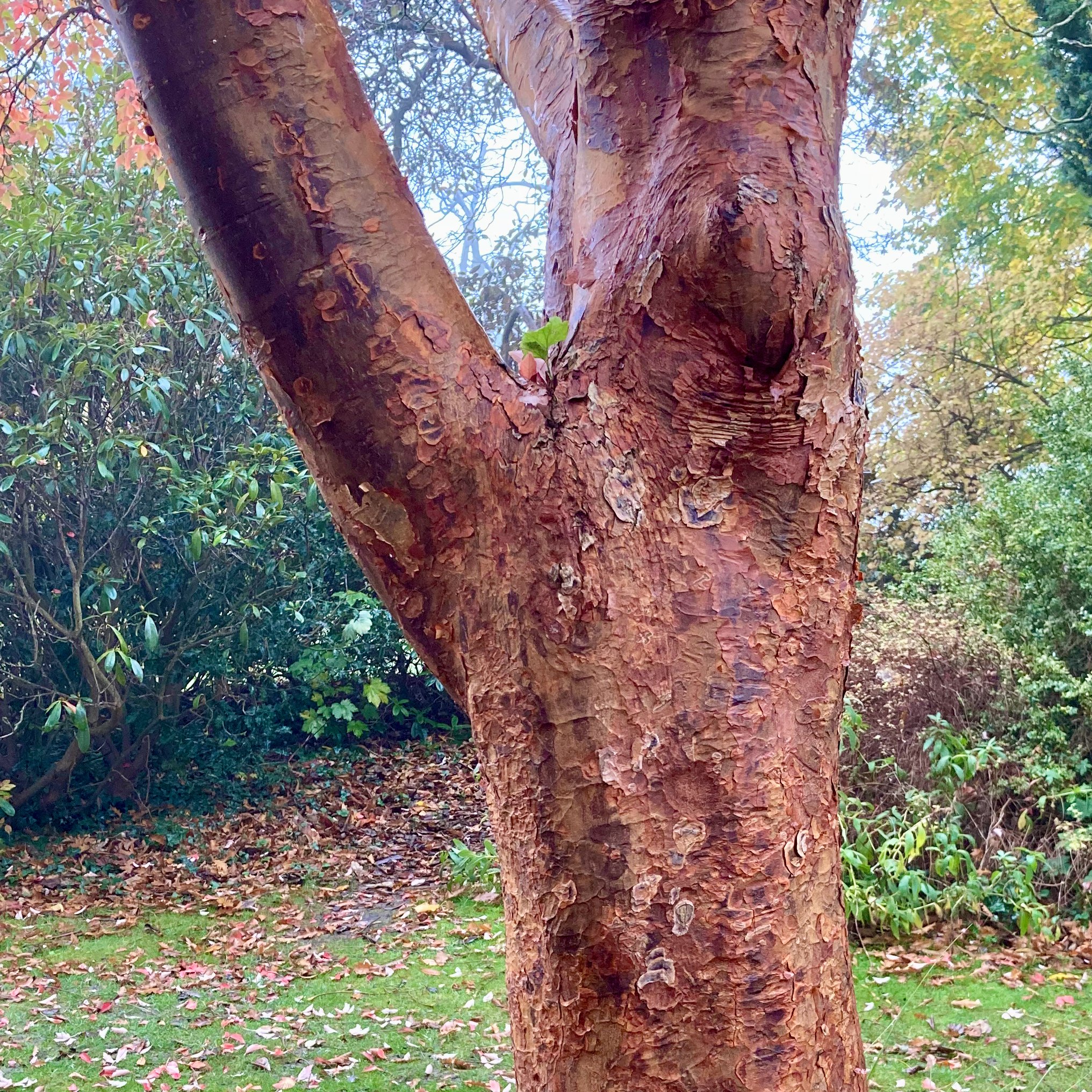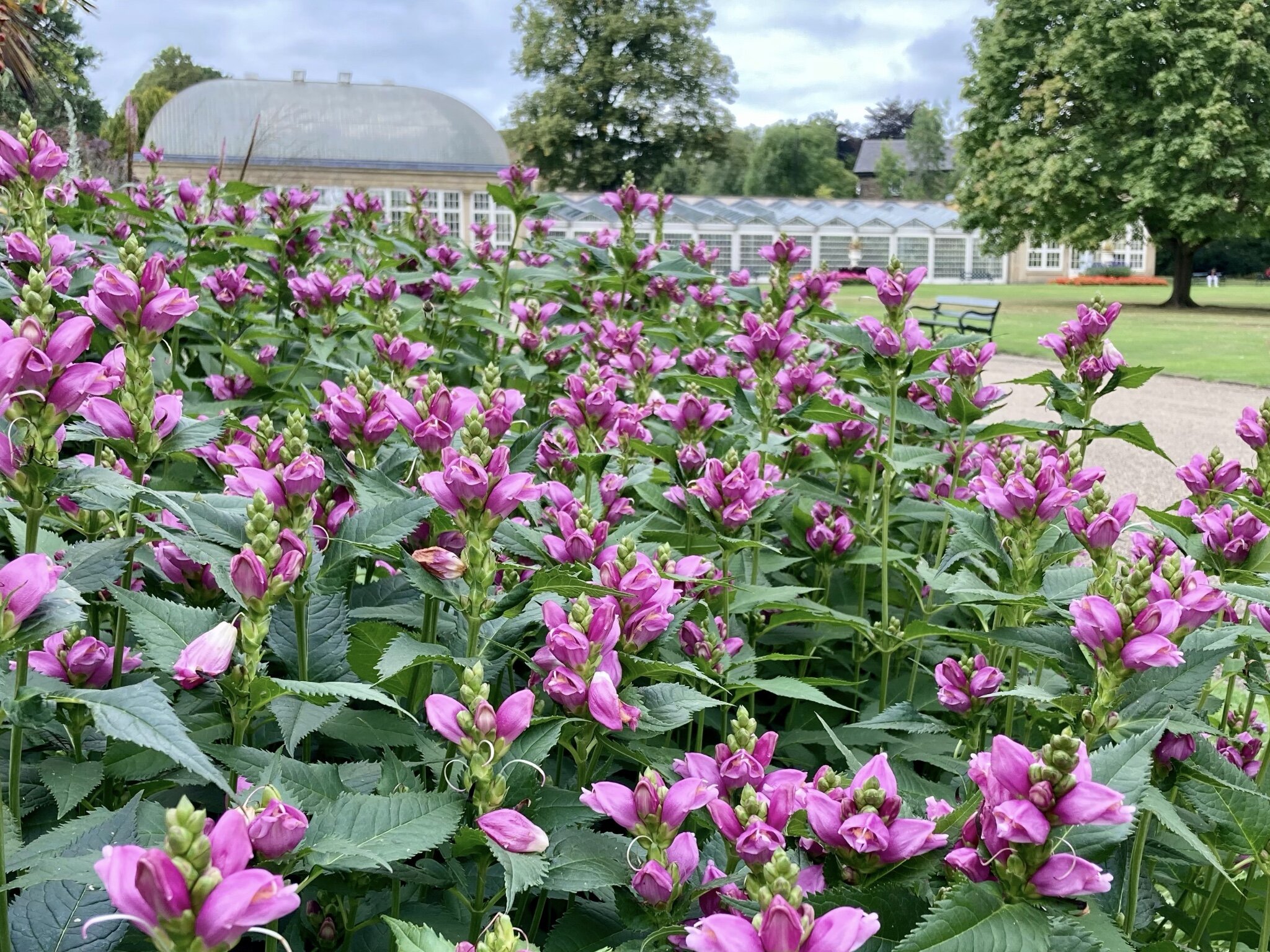Plant of the month
Each month we showcase a plant from the gardens.
Romneya coulteri
Also known as Matilija or Californian tree poppy, this dramatic shrubby perennial provides a spectacular display in the AGM Border, above the top of the Thompson Road drive.
JOVELLANA VIOLACEA
Introduced from Chile, South America, in the mid 19th century, this semi-evergreen sub-shrub needs a very sheltered spot, because it is not tolerant of below-freezing temperatures. However, over the past eight years, since the Mediterranean climate garden was redesigned and replanted, this beautiful plant has been increasing its area, by sucker growth, and is now growing into its neighbours, and flowering very prettily.
Cercis siliquastrum
In the Rock and Water Garden a unique sight is the little multi-stemmed tree, Cercis siliquastrum, every young twig smothered in rosy-pink flowers with some on the old stems too, before the pretty heart shaped leaves appear.
Bulbinella latifolia subsp. latifolia
With seeds collected from the wild, this most attractive evergreen, clump-forming perennial is making its home in Sheffield. Collected from the Renosterveld in South Africa by Professor James Hitchmough of Sheffield University on a plant hunting expedition, the seedlings have been grown on in the South African garden area of Osborn’s Field.
Acacia dealbata
In 2008 the Royal Horticultural Society published ‘Opportunities for Gardeners’, a list of semi-hardy plants which it predicted would become more successful in the UK as the climate became warmer. One of these was Acacia dealbata, the silver wattle or mimosa, and here in the Mediterranean Climate Garden we have a lovely specimen with masses of clustered yellow flowers covered in stamens.
CAMELLIA X WILLIAMSII ‘ST. EWE’
In the 1940s the notable hybridist, J. C. Williams of Caerhays, Cornwall, crossed Camellia japonica and Camellia saluenensis. One of the first plants raised at Caerhays was the camellia ‘St. Ewe’ (named after a village in Cornwall). This is one of the earliest camellias to flower and the first blooms can often be seen early in January.
Chamaerops humilis
Chamaerops humilis is a miniature palm originating from Southern Europe, including Italy, Spain, Sardinia and Sicily, and across the Mediterranean, on the coasts of Algeria and Morocco. It is the only palm native to Europe, and rarely exceeds 1.5m high.
Acer griseum
For year-round beauty and interest, Acer griseum, the Paperbark Maple, is often recommended as the ideal tree for a smaller garden. It is slow growing with a rounded crown, attractive leaflets in threes, green above and blue-grey beneath (griseum meaning grey), which turn a wonderful orange-red in autumn.
Fatsia Japonica
Fatsia japonica has so many star qualities that it is not surprising that it holds the RHS Award of Garden Merit. It is evergreen, remaining handsome year round, and its huge glossy leaves impart a bold and exotic look to a tropical bed. It is valuable too as a landscaping plant for very shady sites, as well as windy seaside ones. Not many plants are ornamental in so many situations.
Ceratostigma willmottianum
The Chinese plumbago is a deciduous shrub, grown for its bright blue flowers, and bronze-red autumn foliage.
Chelone obliqua
Now endangered in some states of its native North America, Chelone obliqua is a clump-forming perennial with dark green foliage looking good all summer on upright stems. In August, the spikes of deep pink flowers start to appear and last for many weeks. Their shape is said to resemble turtles’ heads hence the name Chelone, meaning turtle-like in Greek. Twisted shell flower and turtlehead are common names.
Musa basjoo
Entering the Gardens from the Thompson Road entrance, one cannot help but be totally entranced by the exotic bed outside the South Lodge. Standing proudly in the centre of these tropical plants is the ‘hardy’ Japanese banana Musa basjoo. There is no better plant for achieving a tropical effect.
Berkheya ‘Helios’
Thanks to Trish and Peter Kohn, we have the rare and very special plant, Berkheya ‘Helios’growing in the South African bed in Osborn’s Field (Area J on the downloadable map). The large, strong yellow flowers contrast strikingly with the spiny grey foliage.
Drimys winteri
Sheltered on the terrace in the Mediterranean Climate garden (area L on downloadable map), Drimys winteri, also known as Winter’s bark, has survived unharmed in spite of the cruel, long winter that has taken many plants in the area. In the past it was known only to survive in milder parts of the country.
Lonicera syringantha
Lonicera syringantha (the lilac-flowered honeysuckle), in the family Caprifoliaceae, is a deciduous, rounded shrub with small, sea-green leaves borne in threes along the slender branches. From April it blooms prolifically for many weeks. The tubular rose-lilac flowers are very sweetly scented.
Oemleria cerasiformis
April is one of the most floriferous times in the Gardens with gorgeous camellias, magnolias, cherries and rhododendrons coming into blossom, but added to their beauty is a quietly elegant shrub that possibly goes unnoticed most of the year.
Acacia baileyana
Only a few of the 500 different Australian wattle trees are hardy enough to survive in the UK. The most commonly seen is Acacia dealbata, the mimosa used by florists. Rather more tender, A. baileyana is considered suitable for milder areas only. However, this beautiful little tree grows happily at the entrance to the Dorothy Fox Education Centre.
Sycopsis sinensis
It is always a delight to find a rare and unusual plant in flower, and a botanical garden is the place to find one. Sycopsis sinensis is a large evergreen shrub or small tree on the left as you enter the path to the bear pit.




